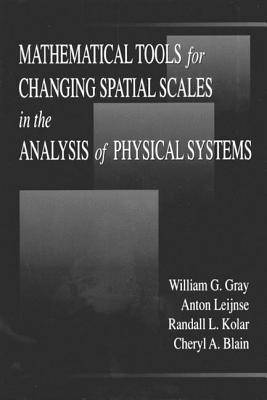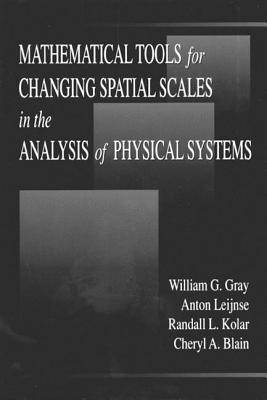
Bedankt voor het vertrouwen het afgelopen jaar! Om jou te bedanken bieden we GRATIS verzending (in België) aan op alles gedurende de hele maand januari.
- Afhalen na 1 uur in een winkel met voorraad
- Gratis thuislevering in België vanaf € 30
- Ruim aanbod met 7 miljoen producten
Bedankt voor het vertrouwen het afgelopen jaar! Om jou te bedanken bieden we GRATIS verzending (in België) aan op alles gedurende de hele maand januari.
- Afhalen na 1 uur in een winkel met voorraad
- Gratis thuislevering in België vanaf € 30
- Ruim aanbod met 7 miljoen producten
Zoeken
Mathematical Tools for Changing Scale in the Analysis of Physical Systems
William G Gray, Anton Leijnse, Randall L Kolar, Cheryl A Blain
Hardcover | Engels
€ 155,45
+ 310 punten
Omschrijving
Mathematical Tools for Changing Scale in the Analysis of Physical Systems presents a new systematic approach to changing the spatial scale of the differential equations describing science and engineering problems. It defines vectors, tensors, and differential operators in arbitrary orthogonal coordinate systems without resorting to conceptually difficult Riemmann-Christoffel tensor and contravariant and covariant base vectors. It reveals the usefulness of generalized functions for indicating curvilineal, surficial, or spatial regions of integration and for transforming among these integration regions. These powerful mathematical tools are harnessed to provide 128 theorems in tabular format (most not previously available in the literature) that transform time-derivative and del operators of a function at one scale to the corresponding operators acting on the function at a larger scale. Mathematical Tools for Changing Scale in the Analysis of Physical Systems also provides sample applications of the theorems to obtain continuum balance relations for arbitrary surfaces, multiphase systems, and problems of reduced dimensionality. The mathematical techniques and tabulated theorems ensure the book will be an invaluable analysis tool for practitioners and researchers studying balance equations for systems encountered in the fields of hydraulics, hydrology, porous media physics, structural analysis, chemical transport, heat transfer, and continuum mechanics.
Specificaties
Betrokkenen
- Auteur(s):
- Uitgeverij:
Inhoud
- Aantal bladzijden:
- 256
- Taal:
- Engels
Eigenschappen
- Productcode (EAN):
- 9780849389344
- Verschijningsdatum:
- 6/07/1993
- Uitvoering:
- Hardcover
- Formaat:
- Genaaid
- Afmetingen:
- 183 mm x 266 mm
- Gewicht:
- 684 g

Alleen bij Standaard Boekhandel
+ 310 punten op je klantenkaart van Standaard Boekhandel
Beoordelingen
We publiceren alleen reviews die voldoen aan de voorwaarden voor reviews. Bekijk onze voorwaarden voor reviews.









